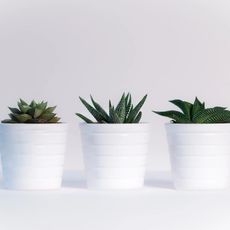Winter Cleaning Guide

February 13, 2024
It happens every year… At the start of each season you wish you would’ve washed everything at the end of the last season so it was ready for you but you never remember and so here you are again, having to clean your winter things. Don’t worry, we’ve been there too. From throw blankets to scarves to radiators, here’s a guide on how to clean those winter staples using Blueland.
Radiator
It’s best to clean your radiator at least once a season so it can run properly and be the most efficient. Here’s how to do it:
1. Turn off the Radiator: Turn off the radiator and wait until the radiator is completely cool before you start cleaning.
2. Remove Dust and Debris: Use the brush attachment on your vacuum to remove any loose dust and debris from the radiator fins and exterior.
3. Wipe Down: Mix together a teaspoon of dish soap with two cups of warm water and use it with a microfiber cloth to wipe down the exterior of the radiator, removing any stubborn dirt or grime.
4. Reassemble and Test: Once the radiator is clean and dry (completely dry!), reassemble any parts you may have removed and turn the radiator back on to ensure it's working properly.
Throw Blankets:
Winter is the time for your throw blankets to shine. You’ve likely gotten away with only washing your throw blanket once a month, if that. But, in the winter, when you’re using a throw blanket more regularly, you should be washing it more regularly as well. If you’re using it daily, it’s recommended that you wash it about every other week. Here’s how to do it:
1. Read the Care Label: First, check the label on your blanket for specific cleaning instructions.
2. Machine Washable Throw Blankets: If your throw blanket is machine washable, lucky you! Use a mild detergent and cold water for delicate materials or warm water for sturdier fabrics. Either way, wash it on a gentle cycle to avoid wearing down the fibers.
3. Hand Wash: For throw blankets that are not machine washable or have delicate embellishments, hand washing them is best. Fill up a tub or sink with cold water and some Oxi Laundry Booster. Gently “swish” the blanket in the water to clean, then rinse thoroughly.
4. Stain Removal: For stains(like sweat stains, mud stains), treat them as soon as possible. Mix together a teaspoon of Oxi Laundry Booster with two cups of warm water. Gently dab the stain with a clean cloth or sponge until it lifts.
5. Air Dry: Check the label again after washing to see what the preferred drying method is. If you can’t throw it in the dryer, lay it flat on a clean towel or drying rack to air dry. Try not to wring or twist out the blanket, as this can damage the fibers.
6. Fluff and Fold: Once dry, fluff the throw blanket to restore its softness and shape. Fold it neatly for storage or immediate use.
Coats:
The good news is that coats only need to be washed 1-2 times a season at most. The bad news is that washing coats is a bit tricky because coats are all different materials. Here's a general guide:
1. Check the Label: Because the way you clean your coat is so dependent on the fabric and materials it’s made with, it’s crucial to check the label.
2. Spot Clean Stains: Before washing, spot clean any stains on the coat using a stain remover or a mixture of water and laundry detergent. Gently dab the stained area with a clean cloth or sponge until the stain lifts.
3. Zipper and Button Care: Before washing, ensure all zippers and buttons are fastened securely to prevent damage during the wash cycle.
4. Hand Wash Delicate Coats: If the care label indicates hand wash only, fill a tub or sink with cold water and add a Laundry Detergent Tablet. Submerge the coat in the water and gently rub it together to clean. Avoid twisting or wringing the coat out to prevent damage to the fabric.
5. Machine Wash Sturdy Coats: If your coat is washing machine friendly… nice choice! Just use a mild detergent and cold water and choose a gentle cycle to minimize wear and tear.
6. Avoid Fabric Softeners and Bleach: Avoid using fabric softeners or bleach, as they can damage the fabric and affect the coat's appearance.
7. Air Dry: Unless your coat’s label explicitly says it can be put in the dryer, we recommend air drying. Hang the coat on a padded hanger or lay it flat to air dry away from direct sunlight and heat sources. This will also prevent the coat from shrinking.
8. Steam or Iron: Once dry, you may need to steam or iron the coat on a low heat setting to remove any wrinkles. As always, check the care label for ironing instructions and use a pressing cloth to protect the fabric.
9. Professional Cleaning: If your coat is made of delicate materials like wool, cashmere, or silk, or if it has special features like insulation or waterproofing, it's best to take it to a professional dry cleaner.
Scarves and Gloves:
As with everything else above, how often you wash your scarves and gloves simply depends on how often you’re wearing them. Every day or close to it? Then you’ll want to wash them every 1-2 weeks. If you’re just wearing them a few times a week, you can go a little longer between washes like every 3-4 weeks. Here’s how to do it:
Check the Care Label: You know what to do—check your label to see what it’s made of and how you should proceed. If the label is missing, you can take your best guess or just go with the most gentle cleaning method below.
Hand Washing:
- Fill a basin or sink with lukewarm water
- Add a Laundry Detergent Tablet (Avoid using bleach or harsh chemical)
- Submerge the scarf or gloves in the water and gently rub the fabric together to distribute the detergent
- Let them soak for a few minutes, then gently rub any soiled areas with your fingers
- Rinse them out thoroughly with cool water until all of the detergent is washed out
Machine Washing:
- Place the scarf or gloves in a mesh laundry bag or pillowcase to protect them from abrasion and snags
- Add a Laundry Detergent Tablet
- Use a gentle cycle and cold water to minimize stress on the fabric
- Avoid washing with heavy or abrasive items that could damage them
Remove Water:
- Gently squeeze out excess water by pressing the fabric between your hands.
Drying:
- Lay them flat on a clean, dry towel.
- Roll the towel with the scarf or gloves inside to absorb excess water.
- Unroll the towel and reshape the scarf or gloves as needed.
- Lay them flat on a drying rack or clean towel to air dry away from direct sunlight and heat. You’ll also want to avoid any hanging to prevent stretching!
Keep Reading
Refill is the New Recycle
The perfect way to start cutting out single use plastic from your home.











